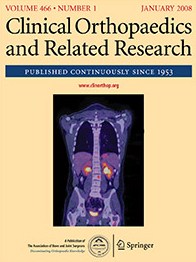
ARTHROPLASTY
Running subcuticular wound closure method provides the most robust perfusion after TKA
Clin Orthop Relat Res. 2016 Jan;474(1):47-56.45 patients scheduled for primary total knee arthroplasty (TKA) were randomized to one of three study groups to determine which of the three predetermined wound closure techniques was associated with the most robust incision perfusion rate immediately following surgery. The purpose of this study was to compare the running subcuticular technique, the vertical mattress technique, and the staple closure technique by evaluating baseline and peak perfusion rates via a laser-assisted indocyanine green angiography (LA-ICGA) immediately after designated wound closure. Results demonstrated that the running subcuticular technique correlated with the most robust perfusion rate (followed by vertical mattress closure and staple closure). Further trials are needed to investigate the clinical implications of this finding on wound healing.
Unlock the full ACE Report
You have access to {0} free articles per month.Click below to unlock and view this {1}
Unlock NowCritical appraisals of the latest, high-impact randomized controlled trials and systematic reviews in orthopaedics
Access to OrthoEvidence podcast content, including collaborations with the Journal of Bone and Joint Surgery, interviews with internationally recognized surgeons, and roundtable discussions on orthopaedic news and topics
Subscription to The Pulse, a twice-weekly evidence-based newsletter designed to help you make better clinical decisions
Exclusive access to original content articles, including in-house systematic reviews, and articles on health research methods and hot orthopaedic topics
Or upgrade today and gain access to all OrthoEvidence content for just $1.99 per week.
Already have an account? Log in


Subscribe to "The Pulse"
Evidence-Based Orthopaedics direct to your inbox.
{0} of {1} free articles
Become an OrthoEvidence Premium Member. Expand your perspective with high-quality evidence.
Upgrade Now












































































